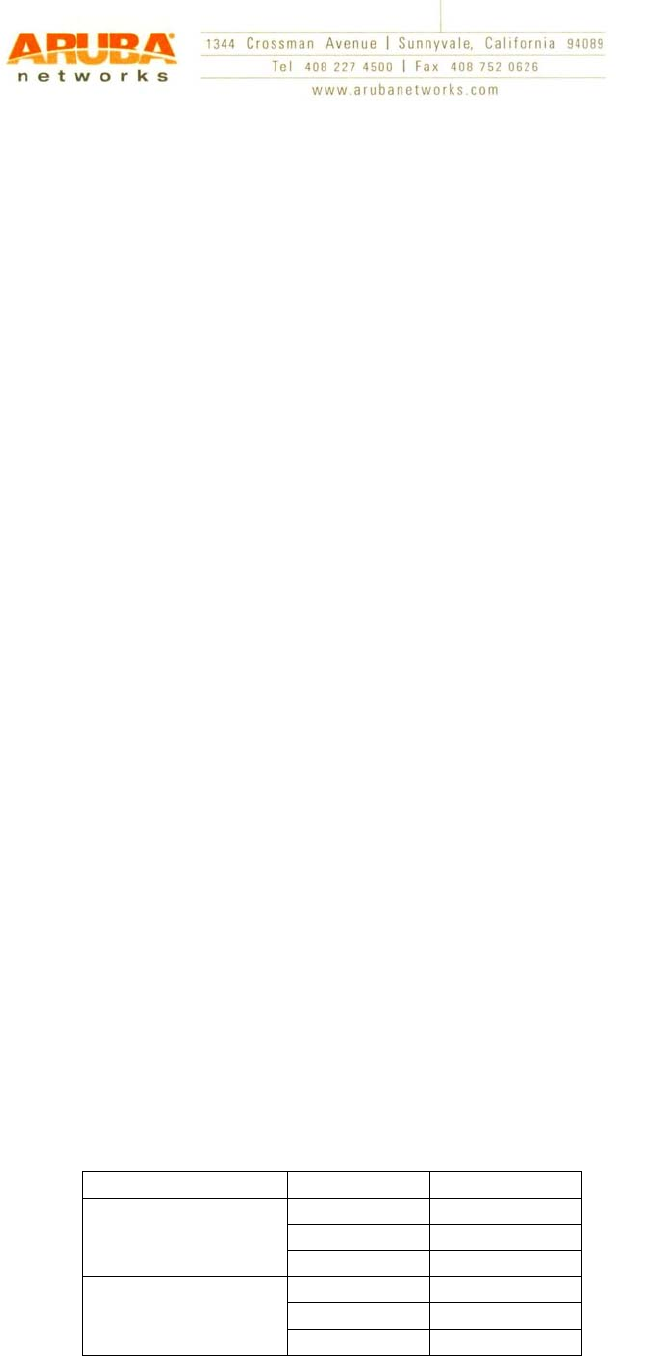Hewlett Packard Enterprise AP134135 IEEE 802.11 a/b/g/n User Manual Professional Installation Guide
Aruba Networks, Inc. IEEE 802.11 a/b/g/n Professional Installation Guide
Contents
- 1. Professional Installation Guide
- 2. Installation Guide
- 3. User Manual
Professional Installation Guide

Professional installation Guide
Product/s covered in this guide:
Device: AP-134 and AP-135 are part of the Aruba’s AP-130 family, implementing dual radio cards
each 2x2 MIMO supporting IEEE 802.11 a/b/g/n operation.
IMPORTANT - Visit Aruba Support web page for the latest information and documentation related to
this product.
IMPORTANT – Please read this document before installing and using your product.
This device must be installed and used in strict accordance with the manufacturer's instructions. Only
approved by the manufacturer power adapters must be used. For replacement, contact your supplier or
distributor.
Installation of this product must comply with local regulations and codes. When this product is used
with external antenna/s, please refer to the installation documentation provided for the antenna/s.
Changes or modifications to the device not approved by the manufacturer of the product could void
the user’s authority to operate the equipment and will void the warranty of the product. No user
serviceable parts; all repairs and service must be handled by a qualified service center.
All products using external antennas must be professionally installed, and the transmit power of the
system must be adjusted by the professional installer/s to ensure that the system’s EIRP is in
compliance with the limit specified by the regulatory authority of the country of deployment.
During deployment of the system and its initial setup, professional installer must ensure that the
allowed EIRP limit is not exceeded (in the Country of exploitation of this equipment). To achieve this
professional installer must use approved and recommended by the Manufacturer antennas,
1. AP-ANT-1B Dual Band - 2.4GHz, 3.8dBi; 5GHz, 5.8 dBi - Omnidirectional;
2. AP-ANT-13B Dual Band - 2.4GHz, 4.4dBi; 5GHz, 3.3 dBi - Omnidirectional;
3. AP-ANT-16 Dual Band - 2.4GHz, 3.9dBi; 5GHz, 4.7 dBi – Omnidirectional 3x3 MIMO;
4. AP-ANT-17 Dual Band - 2.4GHz, 6.0dBi; 5GHz, 5.0 dBi – Directional 3x3 MIMO;
5. AP-ANT-18 Dual Band - 2.4GHz, 7.0dBi; 5GHz, 7.5 dBi – Directional 3x3 MIMO;
6. AP-ANT-19 Dual Band - 2.4GHz, 3.0dBi; 5GHz, 6.0 dBi - Omnidirectional;
7. AP-ANT-93 5 GHz, 14.0 dBi – Directional;
and enter Antenna gain in the software using to setup and mange the product. In additional attenuation
between the device and antenna may have to be measured or calculated.
The following formula can be used to calculate from EIRP limit related RF power based on selected
antennas (antenna gain) and feeder (Coaxial Cable loss):
EIRP = Tx RF Power (dBm) +GA (dB) - FL (dB);
EIRP –> limit specific for each Country of deployment
Tx RF Power –> RF power measured at RF connector of the unit
GA –> Antenna gain
FL -> Feeder loss (including the connectors’ loss)
Antenna Types and Maximum Antenna Gains
FrequencyBandTypeGain(dBi)
2.4GHz
Dipole/Omni
Directional
5GHz
Dipole/Omni
Directional
Note: Antenna information provided above reflect approved antennas for initial release of the
device. For full list of antennas approved/recommended by the Manufacture please visit the
Aruba Networks Inc. web site.